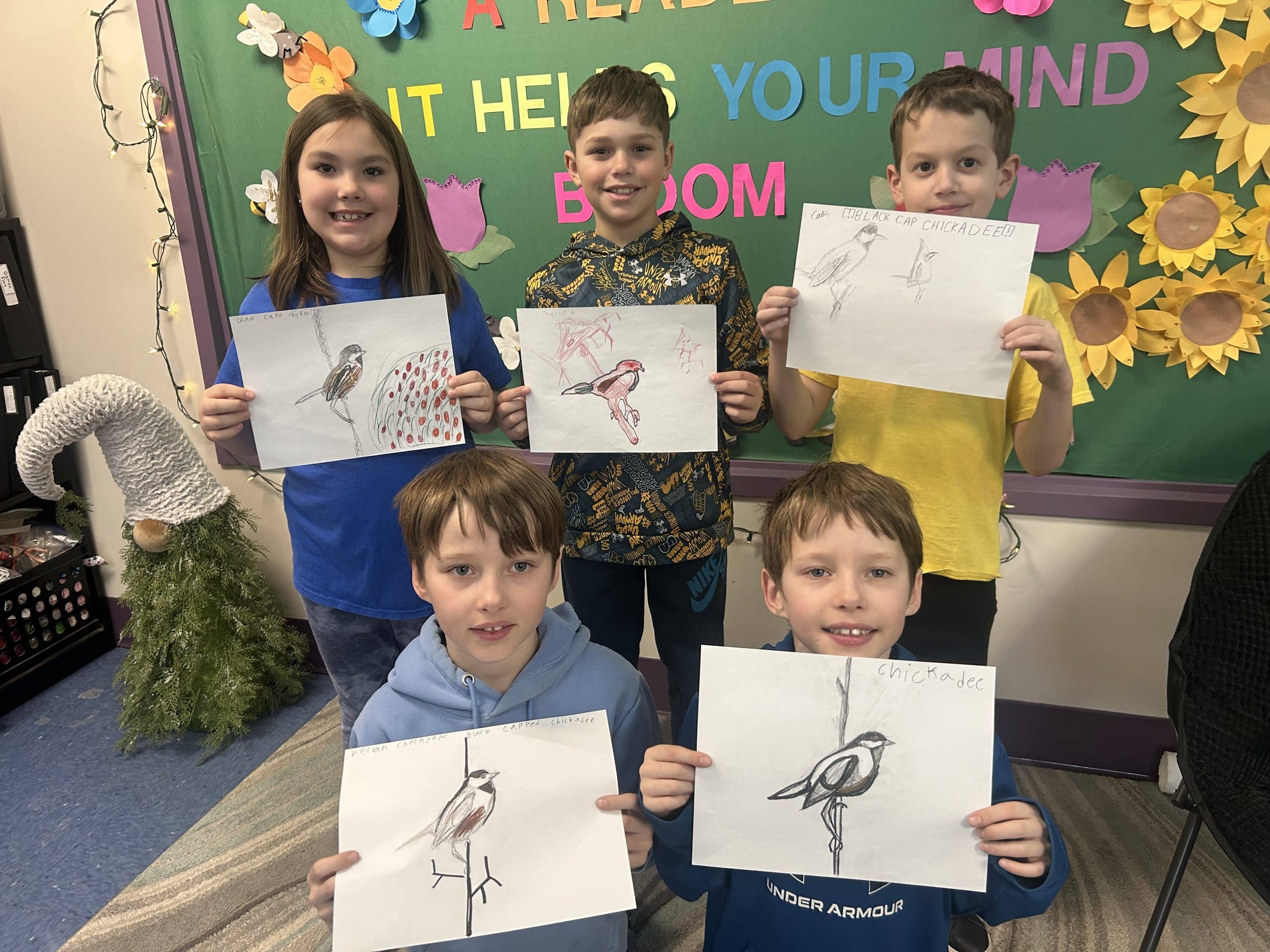Littleville students Declan Chornyak and Dylan Chornyak, back row: Lydia Sadler, Donovan McCaul and Calvin Figueroa display their black-capped chickadee drawings.
Reminder Publishing submitted photo
HUNTINGTON — Littleville Elementary spent the month of February learning about citizen science and birds from around the area, said reading specialist Margaret Petzold.
To start, students learned about the Great Backyard Bird Count which happens every year around the world for four days in February, in which people head outside and observe and document the birds they see and hear in at least a fifteen minute time frame. Participants have the option to count the birds one day and up to four days. This information helps scientists learn a lot about birds, plus helps them determine which ones can be in danger.
Next, third grade and fifth grade students constructed bird feeders out of pinecones, peanut butter, lard and birdseed which they hung in trees around the school yard to help attract birds.
A visit from wildlife rehabilitator Tom Ricardi from Birds of Prey raised their interest even higher. Students got to see eight different raptors that Tom was caring for, including two different types of owls, a peregrine falcon, a turkey vulture, a hawk and the biggest of the birds that he brought — the golden eagle. Ricardi also talked about the impact of taking care of the environment around us and how it affects everything including the birds. “Tom’s experience with raptors was unforgettable,” Petzold said.
Participation in the worldwide Great Backyard Bird Count Feb. 14 through 17 was canceled for the students due to the wind chill, but after they returned from February vacation, they headed outside with binoculars donated by the Barr Foundation and The Gateway Education Foundation, to make observations of the local feathered friends.
The birders used the free app Merlin Bird ID to help identify the birds they saw and heard. The Merlin ID app, created by the Cornell Lab of Ornithology, allows users to identify birds by sounds and photos taken, and to create a life list of birds they have seen.
After their search, the students headed back inside and drew pictures of their observations. Some drew the black capped chickadee which is the Massachusetts state bird while others drew blue jays and cardinals.
“Next year, we hope to continue this valuable educational experience,” Petzold said.



